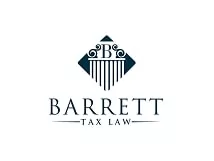On September 11, 2020 the Canada Revenue Agency ("CRA") conducted a consultation hosted by the Canadian Chamber of Commerce. At this consultation, the CRA provided guidance on the deductibility of home office expenses as a result of the COVID-19 pandemic. This memorandum explains (1) what the law is on the topic of home office expense deductions for employees; and (2) how a draft "short-form" T2200 presented at the consultation, have clarified and changed requirements for compliance with the law, according to the CRA.
The CRA has indicated that they will accept employment income deductions for home office expenses if the expenses were required during specific periods of employment when employees were principally required to work from home. This is different than the Income Tax Act ("ITA") which does not refer to taxpayer-delineated periods under the relevant provision, subparagraph 8(13)(a)(i).
This shifting compliance requirement speaks to the context of living in a global pandemic and the reality of having multiple Government-mandated shutdowns.
The Legal Framework of Salaried Employment Deductions
Eligible deductions of employment expenses for employees derive from s. 8 of the ITA. "Write-offs" according to that section include eligible motor vehicle expenses, travel expenses, parking, supplies, computers, cell phones and other equipment, special clothing and tools, as well as salaries and office rent. Pertinent to the present topic, "office rent" includes workspace in the home, referred to in ss. 8(13) of the ITA. For any expense to be eligible for deduction, it cannot be reimbursed.
Similar to other employment expenses, for home office expenses to be deductible they must be required by an employment contract. The home office must also be where the individual principally performs their duties. Moreover, all employers must fill out a Form T2200 for an employee to deduct expenses. This form is consulted by the CRA to assess whether an employment expense was required by the employees' contract. It can later be used as primary evidence in court, although is non-determinative of whether an expense was required by an employment contract.
As a result of COVID-19, many Canadians are required to maintain home offices to perform their employment duties, and that is likely where they perform the majority of those duties. This spurred the CRA to provide comments on home office expenses and propose a new short-form T2200.
The CRA's Changes and Clarifications for Home Office Expenses During COVID-19
The CRA's draft short-form T2200 for home office expenses has two notable elements. First, the CRA affirms that a formal contract is not required between an employee and employer to find an employment requirement exists. This is present in recent case law, and is otherwise recognized by the CRA - but not clear on the current form T2200.
The second notable element is that the draft short-form T2200 asks whether an employee was required to work principally (meaning more than 50% of the time) from their home office space for one or more periods in 2020 during COVID-19. The draft form goes on to ask the taxpayer to identify those periods. This is distinguishable from subparagraph 8(13)(a)(i) of the ITA which requires that the home office space be where the employee principally performs their duties, without referencing any specific time period. The time period subparagraph 8(13)(a)(i) relates to is presumably the taxation year in question.
If the proposed short-form T2200 is made official, then employees can prove compliance with subparagraph 8(13)(a)(i) during periods that they delineate - not necessarily the entire tax year that a form T2200 relates to. In other words, during the current pandemic, employees can apply the concept of "principally" (i.e., greater than 50%) to more than one window of time. To illustrate, taxpayer-employees can indicate that they spent more than 50% of their time fulfilling employment duties in their home office from March to May, and August to October, excluding months that they may have performed employment duties at an office. This speaks to realities of work closures relating to COVID-19 and creates greater opportunity for eligible deductions.
Two other considerations arising from the CRA's feedback on home office expenses are that: (1) a regular Form T2200 will still have to be filed for non-home office or supplies expenses, as the general form includes expenses not considered in the draft short form; and (2) the new short-form T2200 will not need to be filed with an employee's income tax return, but must be signed by the employer and kept by the employee in case it is requested by the CRA.
As the draft form was only released in September of 2020, it is important to stay up to date on this issue. The CRA will likely provide more clarifications on the topic of home office expenses during COVID-19, as requested by accountants, tax lawyers, and other interested taxpayers.
Footnotes
1. ITA, subparagraph 8(1)(i)(ii).
2. ITA, subparagraph 8(1)(i)(ii). 2 ITA, subparagraph 8(13)(a)(i); An employee may also satisfy this provision if the office is (ii) used exclusively during the period inrespect of which the amount relates for the purpose of earning income from the office or employment and used on a regular and continuousbasis for meeting customers or other persons in the ordinary course of performing the duties of the employment.
3. This is based on the approach taken by the TCC in Lester v R, 2011 TCC 543 at paragraph 28; as well as the fact that subparagraph 8(13)(a)(i) does not reference specific periods of deductions, but flows from subparagraph 8(13)(a) dealing with a full taxation year; whereas subparagraph 8(13)(ii) does reference specific periods of deductions and requires a higher threshold of use for those periods.
The content of this article is intended to provide a general guide to the subject matter. Specialist advice should be sought about your specific circumstances.

